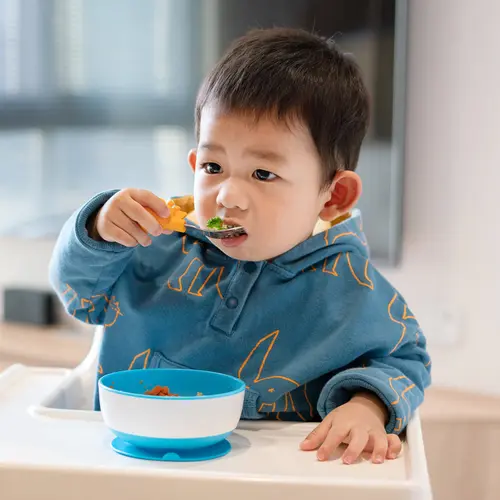Grocery shopping with children in tow may be tough from time to time, but the jury's in and experts agree: grocery shopping with kids fosters skills they need for life.
"The more often your kids shop with you, the better it is for their development," says Tanya Remer Altmann, MD, a pediatrician. School-age children can sharpen a variety of skills in the supermarket, including those that will help them to make savvy food choices on their own in the years to come.
But what about the whining, begging, and boredom? There will always be some of that. The trick is to make kids part of the process, long before you head out to the store.
Grocery Shopping With Kids: It Starts With a Plan
Before setting foot into the store, you want to lay a little groundwork. One key is to get children involved in the grocery shopping process. Try:
- Talking about what to buy for healthy meals and snacks, then have kids make a list of what you need, suggests Janice Bissex, MS, RD, co-author of The Moms' Guide to Meal Makeovers.
- Get everyone involved in checking store flyers for sales, or new and different healthy foods to try.
- Keep kids involved emotionally. Allow them to pick a few items for school lunches and other meals.
Ready, Set, Grocery Shop!
Once you're in the store, give your kids as much to do as they can handle for their age. Here are some ways to keep kids busy and hone their skills.
- Let Kids Help. Dole out coupons to kids and let them find the relevant foods. Or delegate part of the grocery shopping list and have kids locate the items. They can also help by crossing off items as you toss them in the cart. And stick to the list as much as possible to curb costs and set a good example.
- Make Up Some Math Games. School-age kids are capable of tracking grocery costs with a calculator. Have them enter the price of each item. It's fun for them to see how close they come to the final cost. In the produce section, try:
Asking kids about how much six apples might weigh, then weigh the fruit to see if they were close.
Ask kids to place 2 pounds worth of oranges in a bag for you.
Give older boys and girls the price per pound, and have them guess at the total price. See how close they come at checkout.
- Play "I Spy." When grocery shopping with older kids have them play detective, searching out certain items for you, such as:
Cereal with at least 4 grams of fiber and fewer than 8 grams of sugar per serving
Pineapple canned in its own juice
Whole-grain bread that costs $2.50 a loaf or less
- Branch Out. "Find a new fruit or vegetable, like a starfruit or papaya or dried cherries or mango to try," Bissex recommends.
Have your child choose three different color apples and have a taste test at home. Or purchase clementines instead of oranges for a different taste treat.
- Compare Costs. Food is pricey, and kids should be made aware of the cost whenever possible. Have them:
Compare smaller and larger packages of foods such as cereal and crackers to see what they think is the better value.
Compare the cost of national brands to store bought items for the best price: store brands are not always cheaper.
Grocery Shopping With Kids: Know the Limits
It's OK to make it clear that you expect your kids to participate in the important chore of grocery shopping, but there's no need to test the limits of their (or your) patience.
"Just shop for groceries. Because kids tire easily, it can be too overwhelming to do much else than spend an hour or so getting food," Altman suggests.
Grocery shopping with your kids is a skill best developed slowly. Remember, trying to cram too much into one outing is no good for you either!


